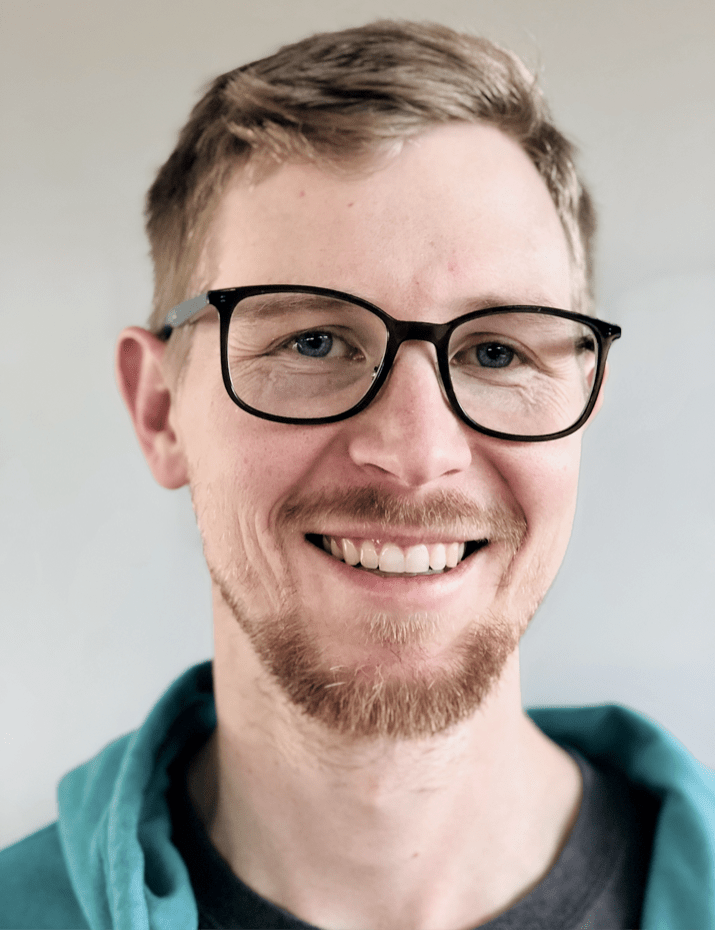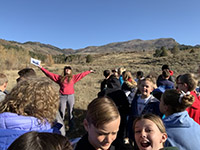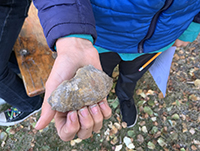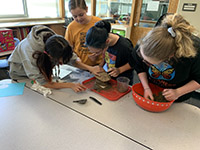Chuck and Cathy Williamson Science Communication Fellowship
The Williamson Fellowship is aimed at increasing geoscience communications and encouraging diversity in the geosciences. The Williamson Fellows will develop relationships with 7-12 public school programs, engage youth in geoscience, increase public science literacy, and provide opportunities for U of U geoscience students to gain outreach and science communication experience.
All teaching resources & activities
Kiri and Ashley!
2024-2025 Williamson fellows
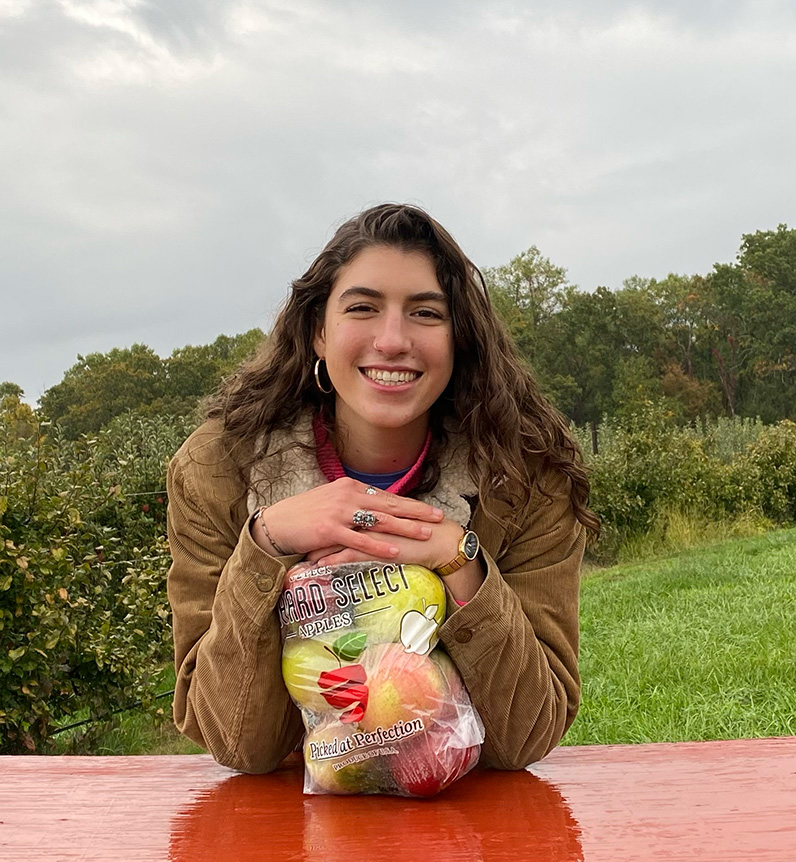
Kiri Maza

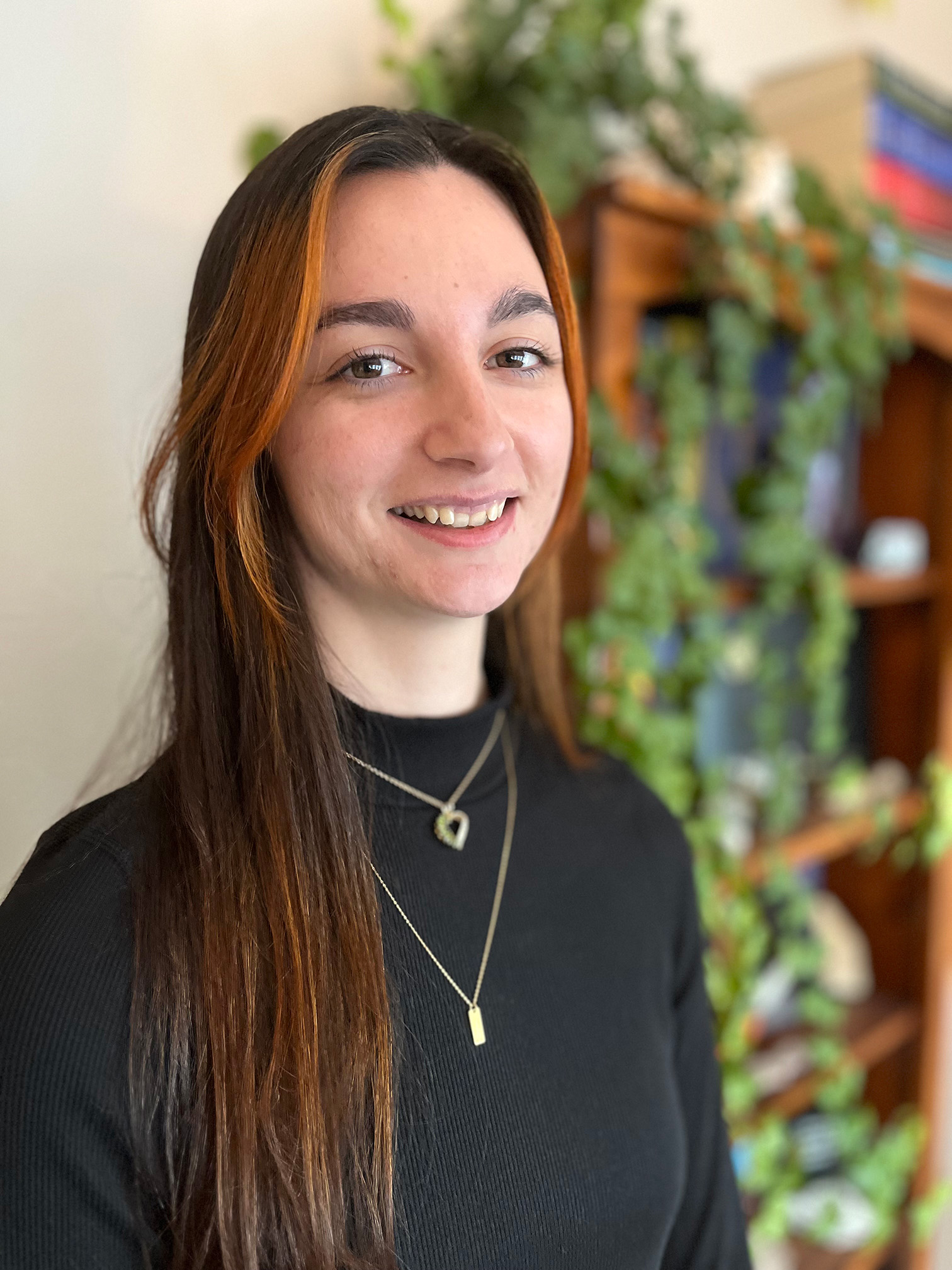
Ashley Morris
Ashley Morris is a 2nd year Ph.D. student in the Department of Geology and Geophysics working with Dr. Sarah Lambart. Her graduate studies focus on the petrology and geochemistry of a variety of igneous rocks from across the ocean floor aimed at understanding a range of tectonic and chemical processes. Ashley earned her bachelor’s degree in Geosciences from the University of Iowa before moving the SLC and earning her master’s at the U before starting her Ph.D. program. Throughout her academic career she’s become excited about not just learning science but sharing it with others as well. Outside of the lab, whether skiing, hiking, or just being together, she loves spending time with her friends, family, and her dogs. As a Williamson Fellow, Ashley hopes to practice developing new ways to inspire young scientists while sharing her own enthusiasm for the natural world.

2024-2025 Williamson Assistants
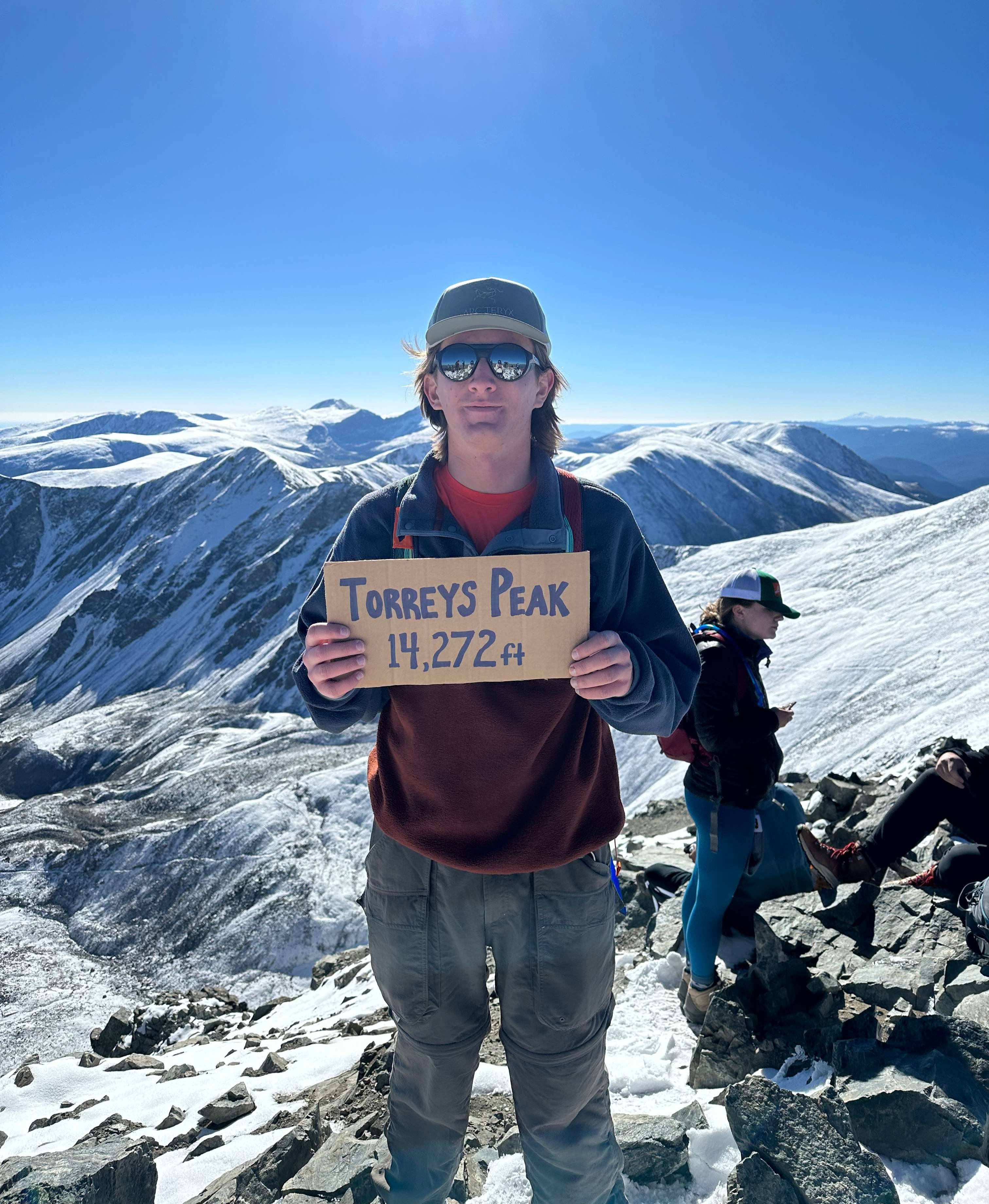
Luke Fordham
Luke is a sophomore majoring in Environmental Geoscience and was thrilled to serve as a Williamson Assistant during the Spring 2026 semester. Originally from the City of Orange, California, Luke enjoys skiing, climbing, and backpacking in his free time. During the semester, he assisted in Mr. Good’s 8th-grade classroom at SLCSE Bryant and participated in several field trips with the students.

Emma Craig
Emma is a sophomore majoring in Earth Science Composite Teaching. She is currently conducting research on natural sunscreens in zebrafish in the Gagnon Lab and is particularly interested in the intersections between geology and biology. Outside of academics, Emma enjoys painting, hiking, and spending time with her family, friends, and cats. As a Williamson Assistant, she hopes to help students develop a love for science and a deeper appreciation of the natural world.
Field Trips to the Frederick Albert Sutton Building (FASB)
at the U of U campus.
Geology Exploration Field Trip guide
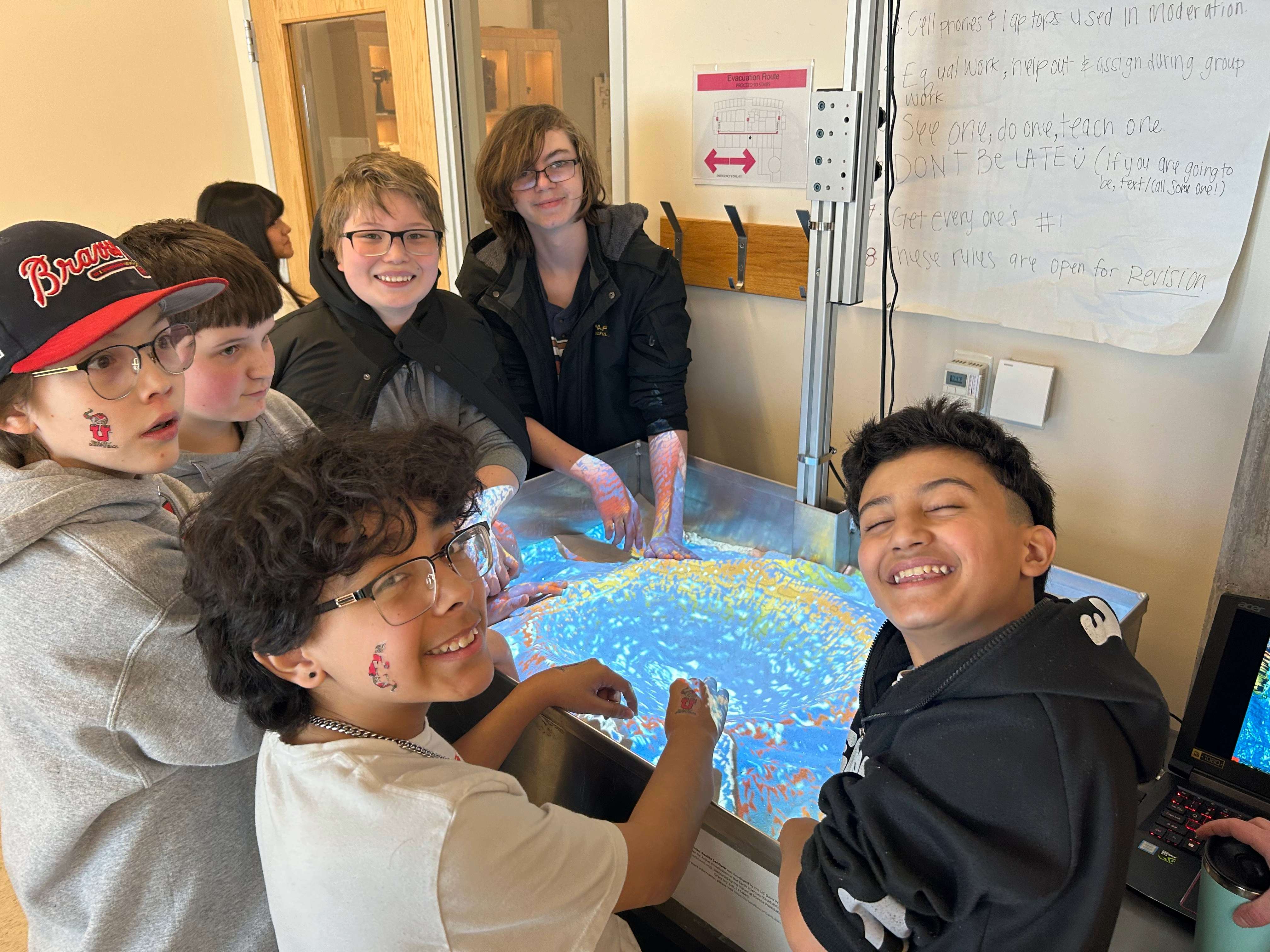
To expand outreach across the Wasatch Front, the Williamson Fellows organized a series of field trips to the Department of Geology & Geophysics on the University of Utah campus. These trips were open to any middle, junior, or high school class and featured engaging, hands-on activities. Students explored fossils, used a sedimentology stream table, interacted with an augmented reality sandbox, and examined a wide range of minerals. They toured the groundwater isotope lab and learned about the rock slabs displayed throughout the department. Importantly, students also had the opportunity to connect with graduate students and faculty members, gaining firsthand insight into what it means to be a geoscientist.
Eight field trips were offered, each accommodating up to 60 students. Recruitment was conducted through district listservs and coordinator Holly Godsey’s teacher network. Interest was overwhelming—trips filled quickly, and many schools remain on a waitlist for future opportunities.
In total, over 340 students from seven schools across four districts (spanning Salt Lake to Utah counties) participated:
- Bryant Middle School, Salt Lake City School District
- Churchill Junior High School, Granite School District
- Mountain Ridge High School, Jordan School District
- American Fork High School, Alpine School District
- Lake Mountain Middle School, Alpine School District
- Copper Mountain Middle School, Jordan School District
- South Hills Middle School, Jordan School District
2024-2025 Blog Posts
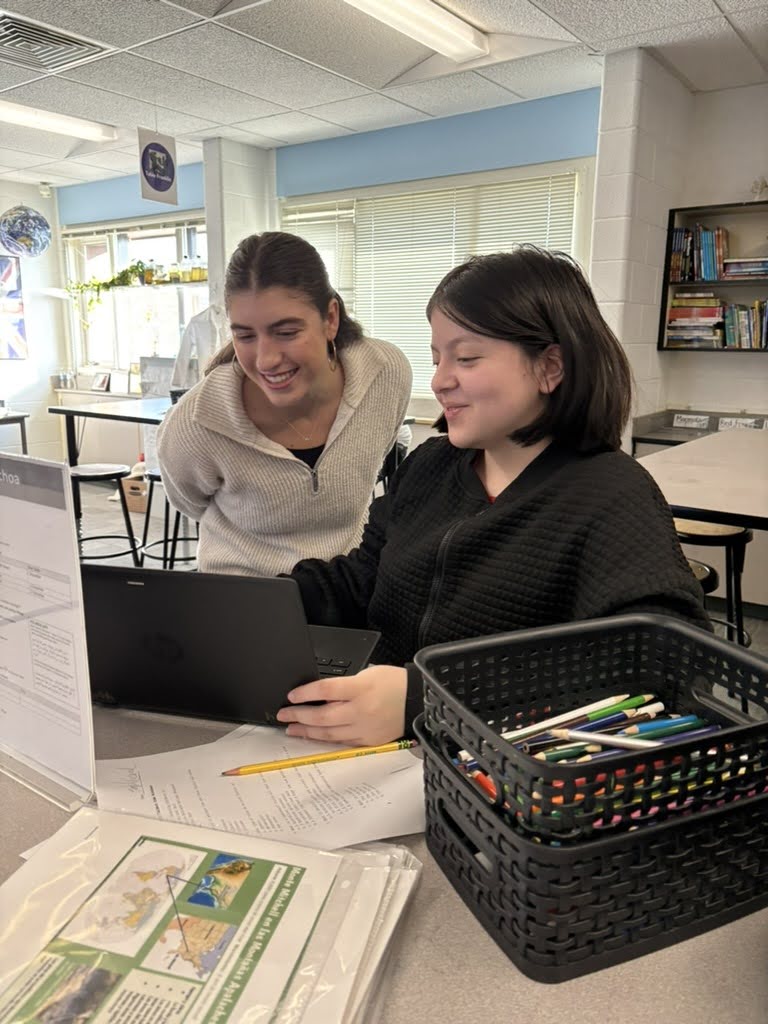
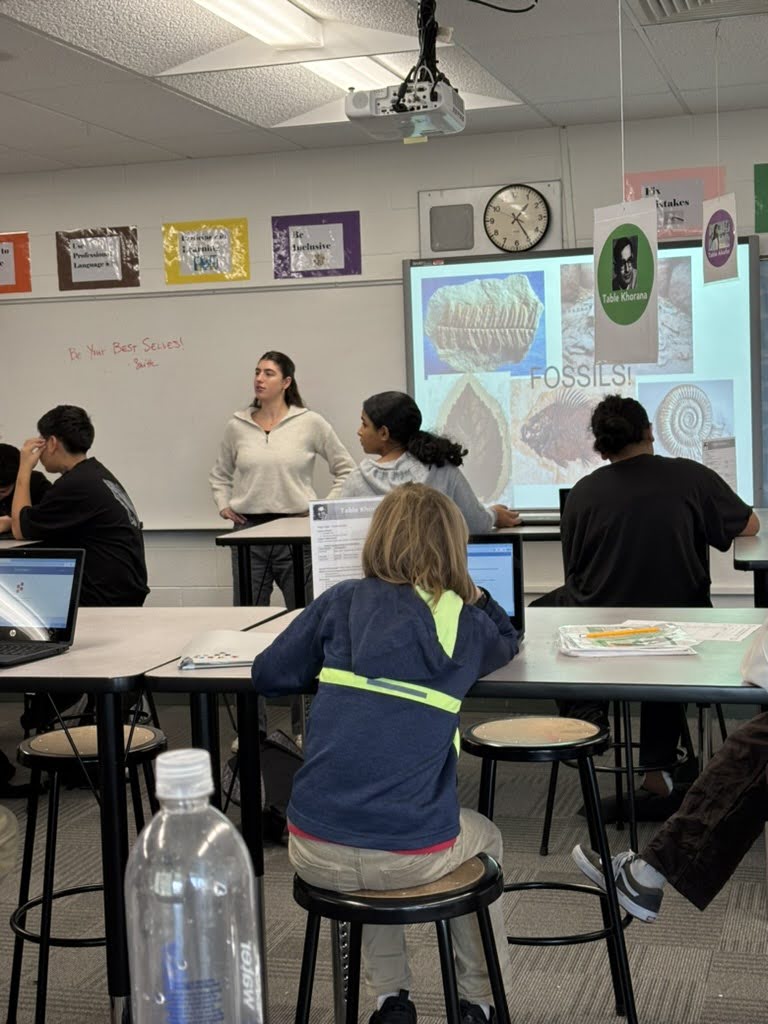
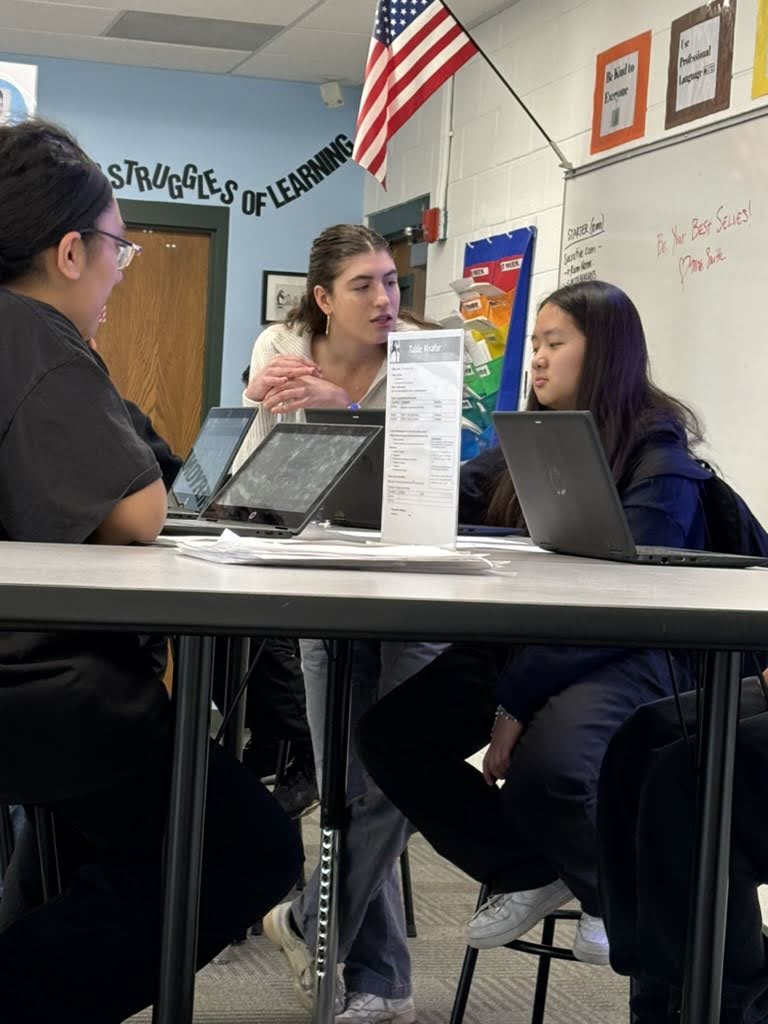
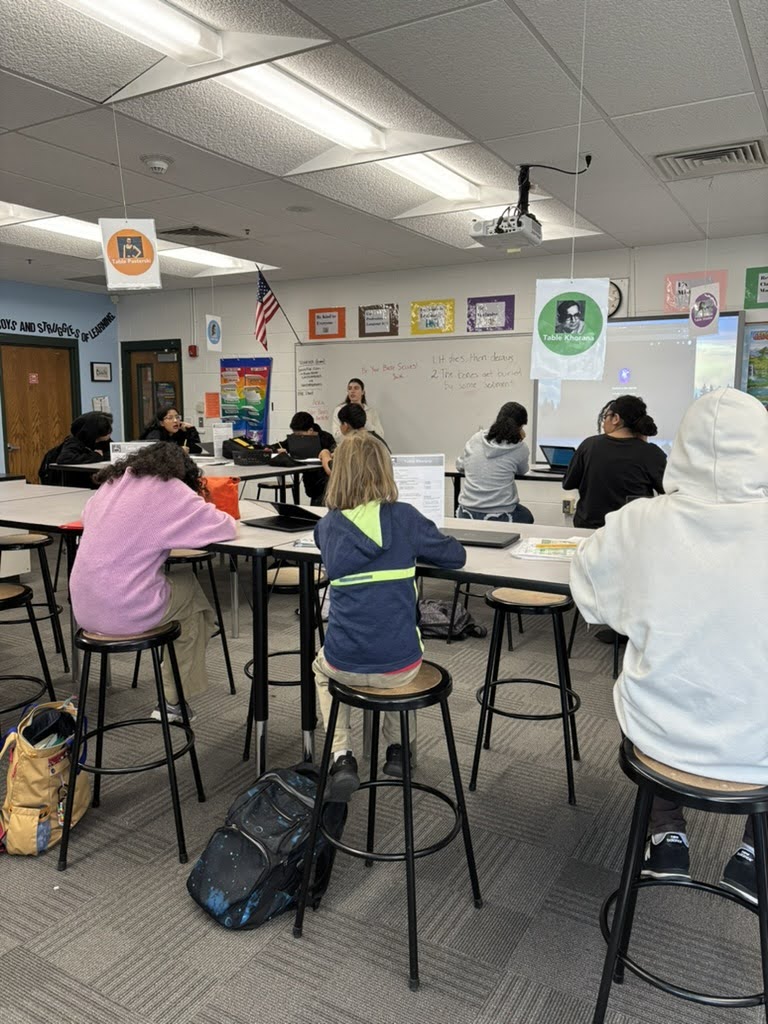
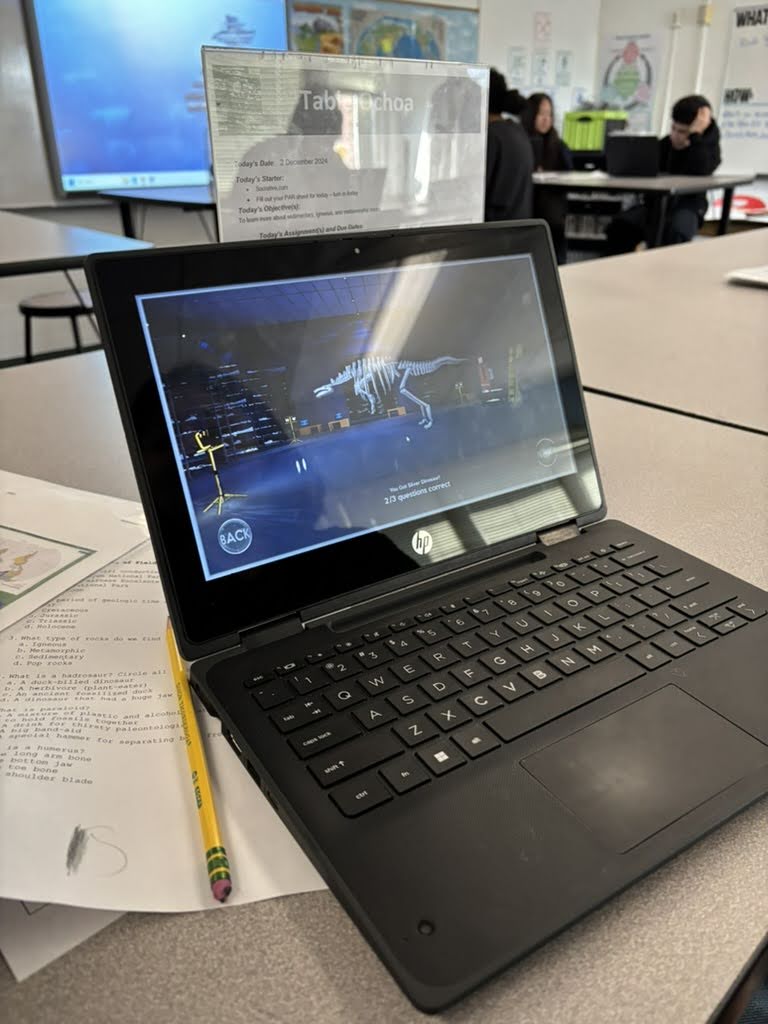
Kiri's Paleontology Videos/Vlog!
Watch: Kiri's Week of Fieldwork - A Vlog
Watch: What a Paleontologist Packs in Their Bag for Fieldwork
Watch: Prospecting 101 - How to Prospect for New Fossil Sites
Kiri Teaching 7th Graders using the Videos Above
What makes a mountain move and grow? How does water shape the land? How do rocks form and change? The 7th graders at Bryant Middle School have spent the past few months learning the answers to these questions in their Geology unit. Earlier this year, I joined the Natural History Museum of Utah in Grand Staircase Escalante National Monument to conduct paleontology fieldwork and help uncover an ~80 million year old dinosaur. I decided to bring my camera and film my week in the field, bringing the field into the classroom for my students that otherwise may not have the opportunity to see and experience what paleontology fieldwork is like.
After covering the earth's layers, plate tectonic boundaries, and the rock cycle, I taught the students a lesson about fossils. We covered what fossils are, what they can tell us, and how they form. I wanted to teach a lesson that utilized a variety of educational tools, to maximize student engagement. We watched a concise illustrated video covering how fossils form, taking notes as a class on each step of the process. Students utilized critical thinking skills through class discussion, debating the question “is a footprint a fossil?”. They watched a short video I filmed while in the field, giving them a realistic view of what doing paleontology fieldwork is like. The students were also able to express their creativity and imagination in the final activity, in which they utilized NHMU’s ResearchQuest website, which had a dinosaur skeleton simulator that allowed students to test the effects of different shapes and sizes of different bones on survival rates. Overall, the students came away with a deeper understanding of Earth's processes and all that we can learn from the geologic record!
-Kiri

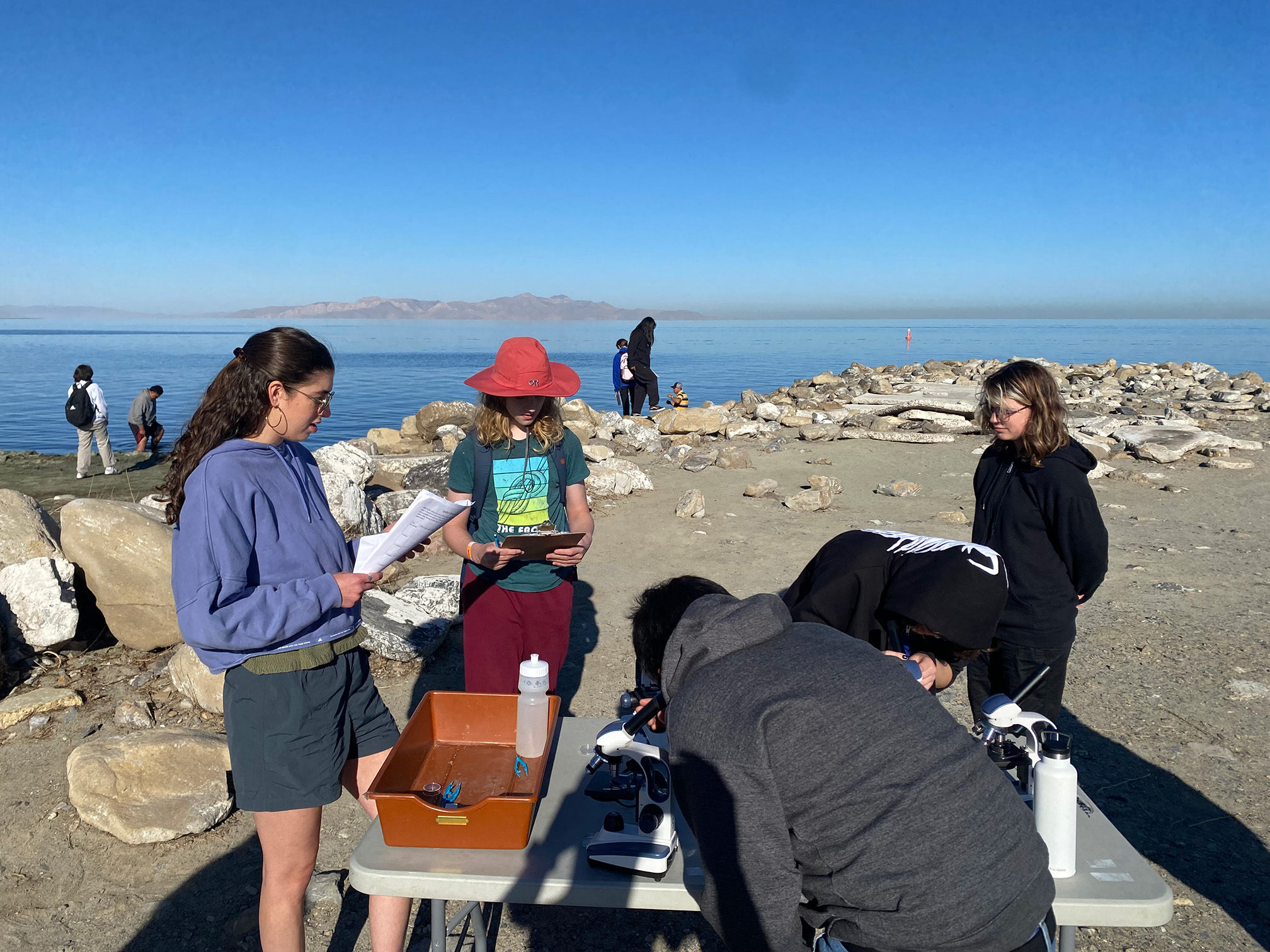
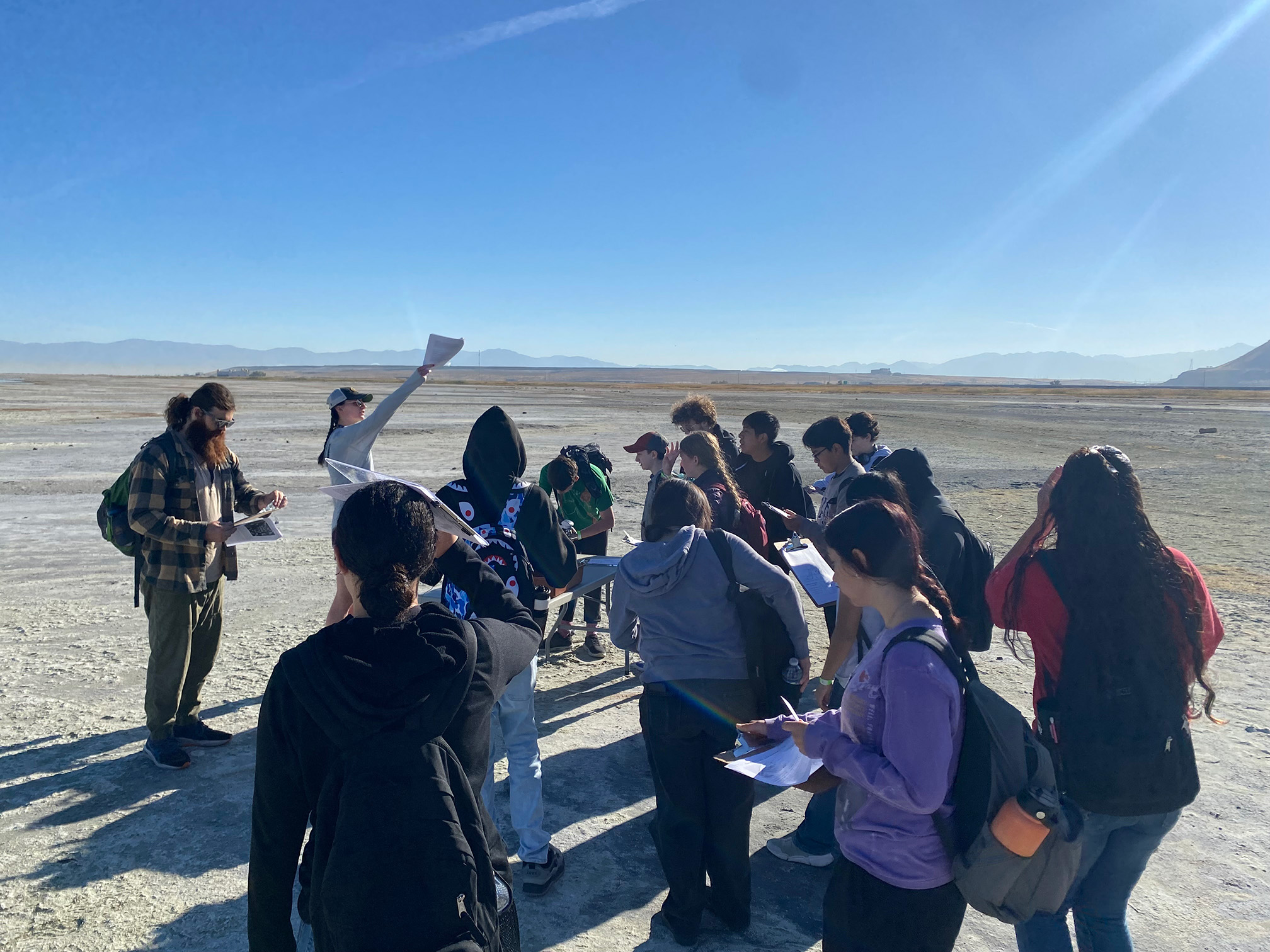
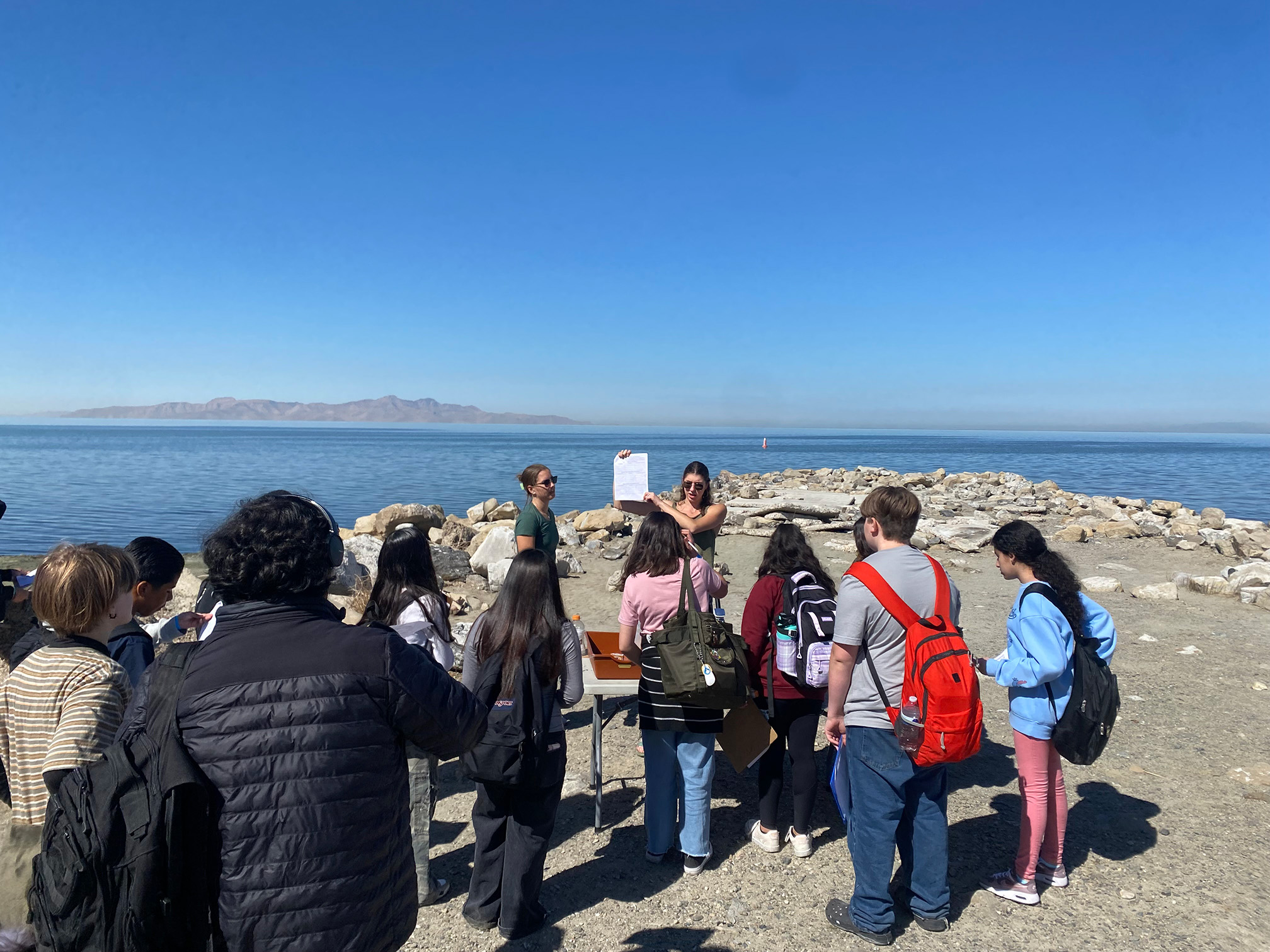
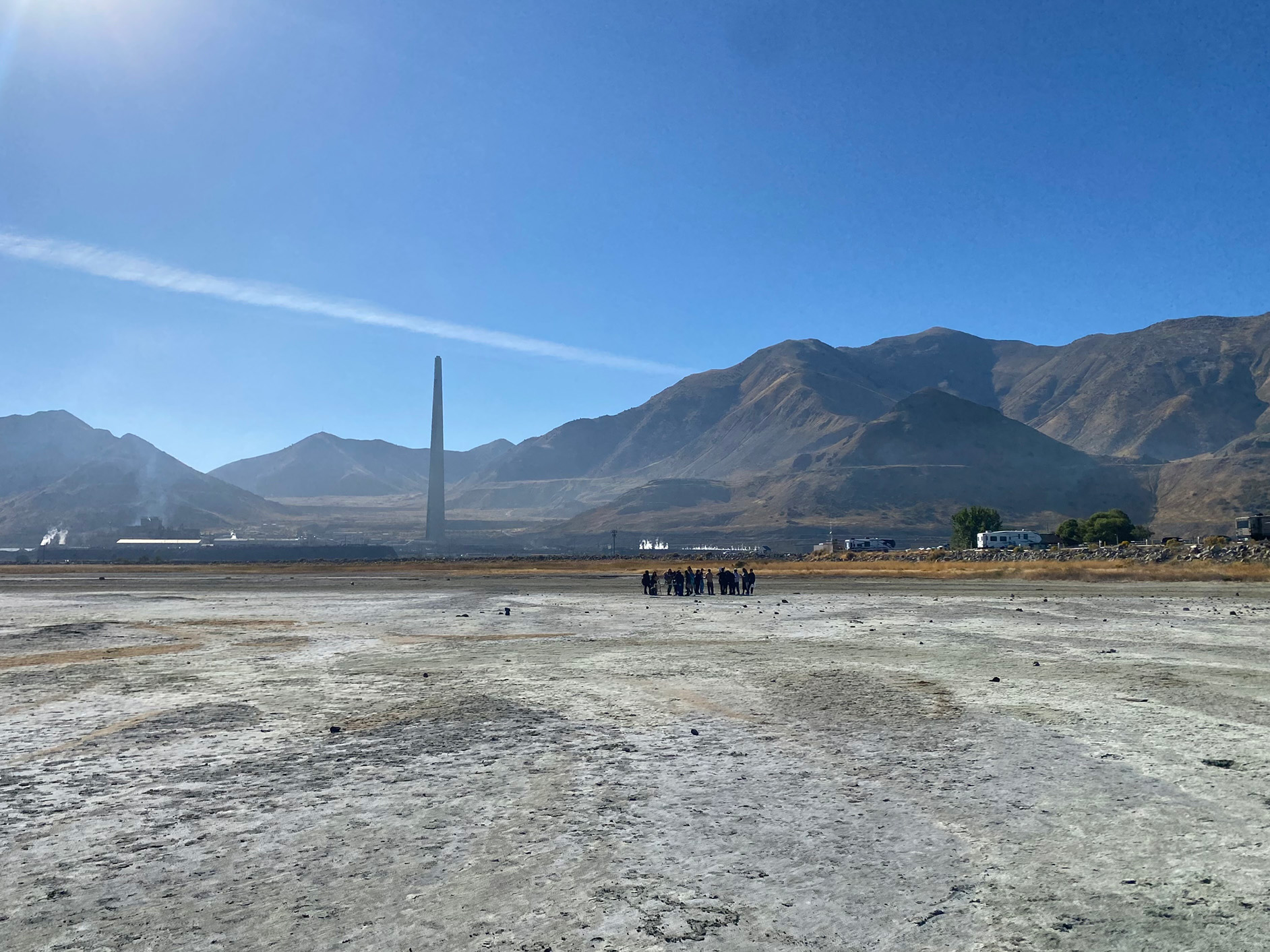
Field Day at the Great Salt Lake!
What lives in the Great Salt Lake? Why did the lake shrink 30,000 years ago? How does shrimp poo turn into sand? These are all questions we explored with the Salt Lake Center for Science Education Bryant students at the Great Salt Lake this week. Despite being the city’s namesake, some students had never been before and what better place to learn science? Students explored three stations, learning about the ecology of the GSL, the geology of the area, and the unique weather patterns created by the lake. They will be able to draw on this experience in the classroom throughout the semester making concepts more realistic than reading a text or listening to lecture. At the geology station we compared the ooid sand, formed as minerals deposit around particles like brine shrimp poo, to more common quartz sands. Watching students draw connections between the sand they scooped up from beneath their feet and the ecology station where they watched brine shrimp swim made the value of these experiences very apparent.
So far this year, we have also seen how the Williamson Fellowship has progressed and left impressions on previous fellows. Kiri and I were joined by 2022-2023 Williamson Fellow Tori Pavlovics, and 2023-2024 Williamson Assistant Zach Knettles, both of whom were excited to be back working with kids. As the first field trip as a Williamson Fellow, I am left inspired to get more students out in field this year and develop more experiences like this one.
Ashley Morris - October 2, 2024
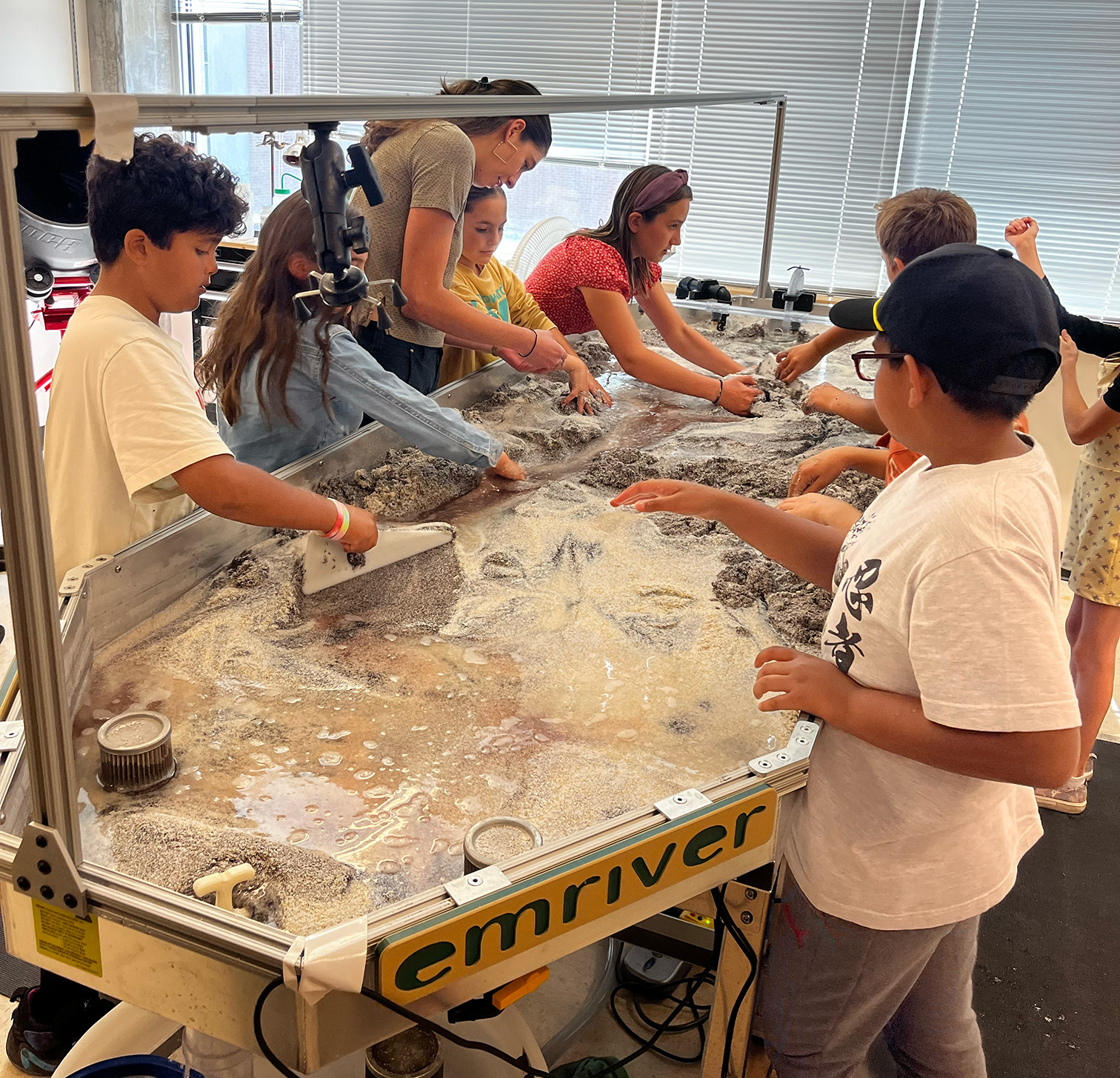
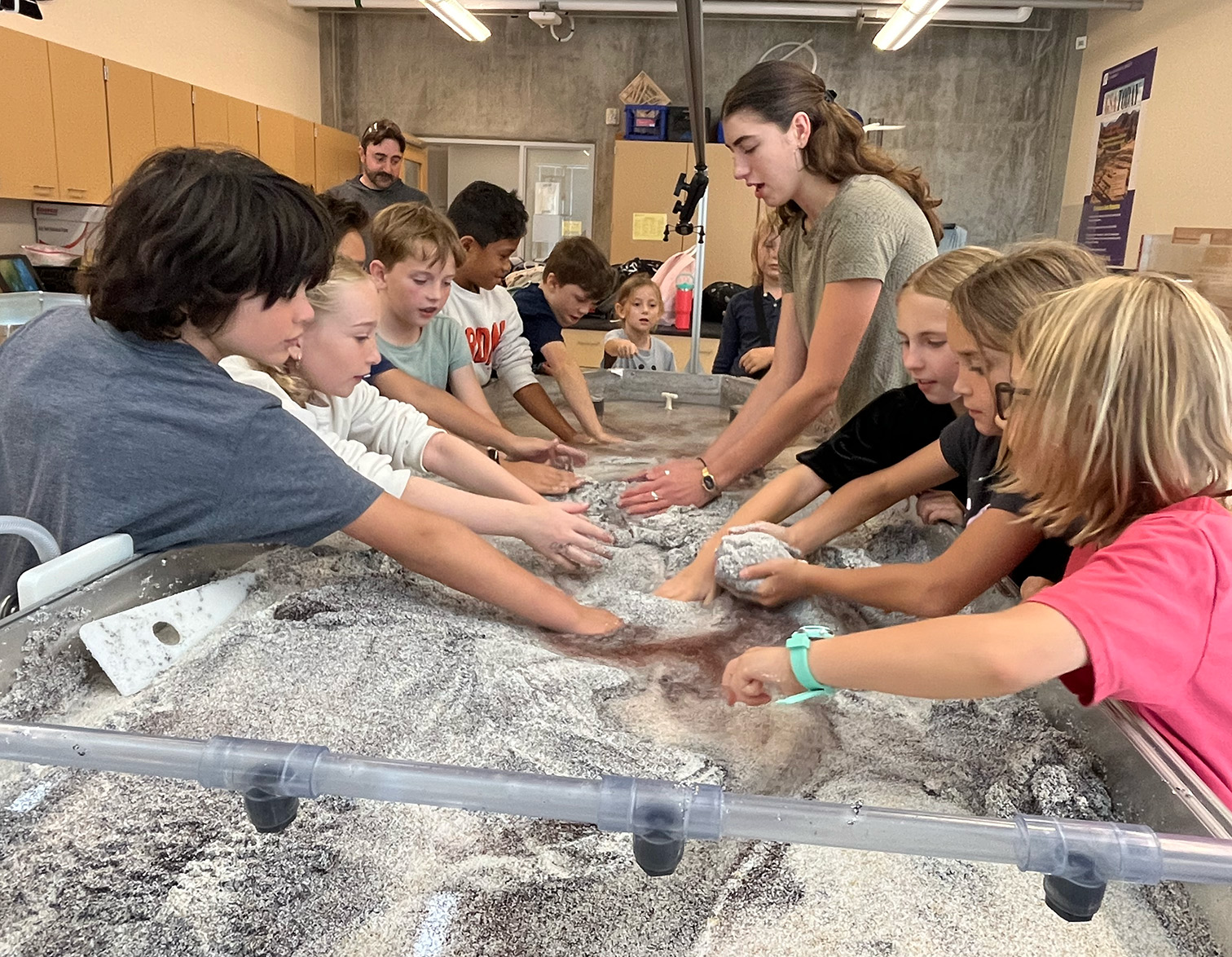
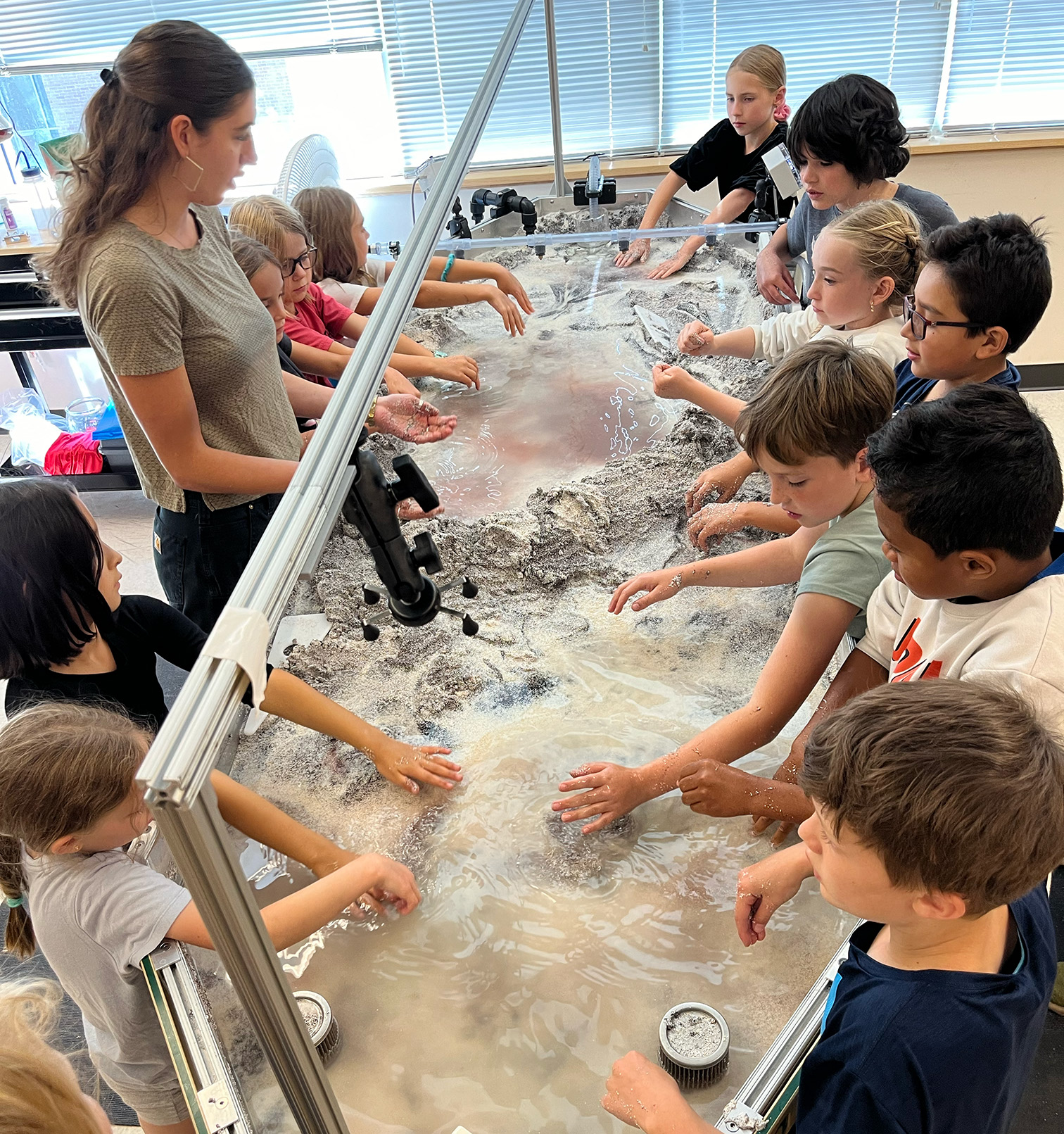
4th Grade Field Trip to The U of U Frederick Albert Sutton Building
4th graders visited FASB and were taught about sediment transport and grain size differences with the stream table!
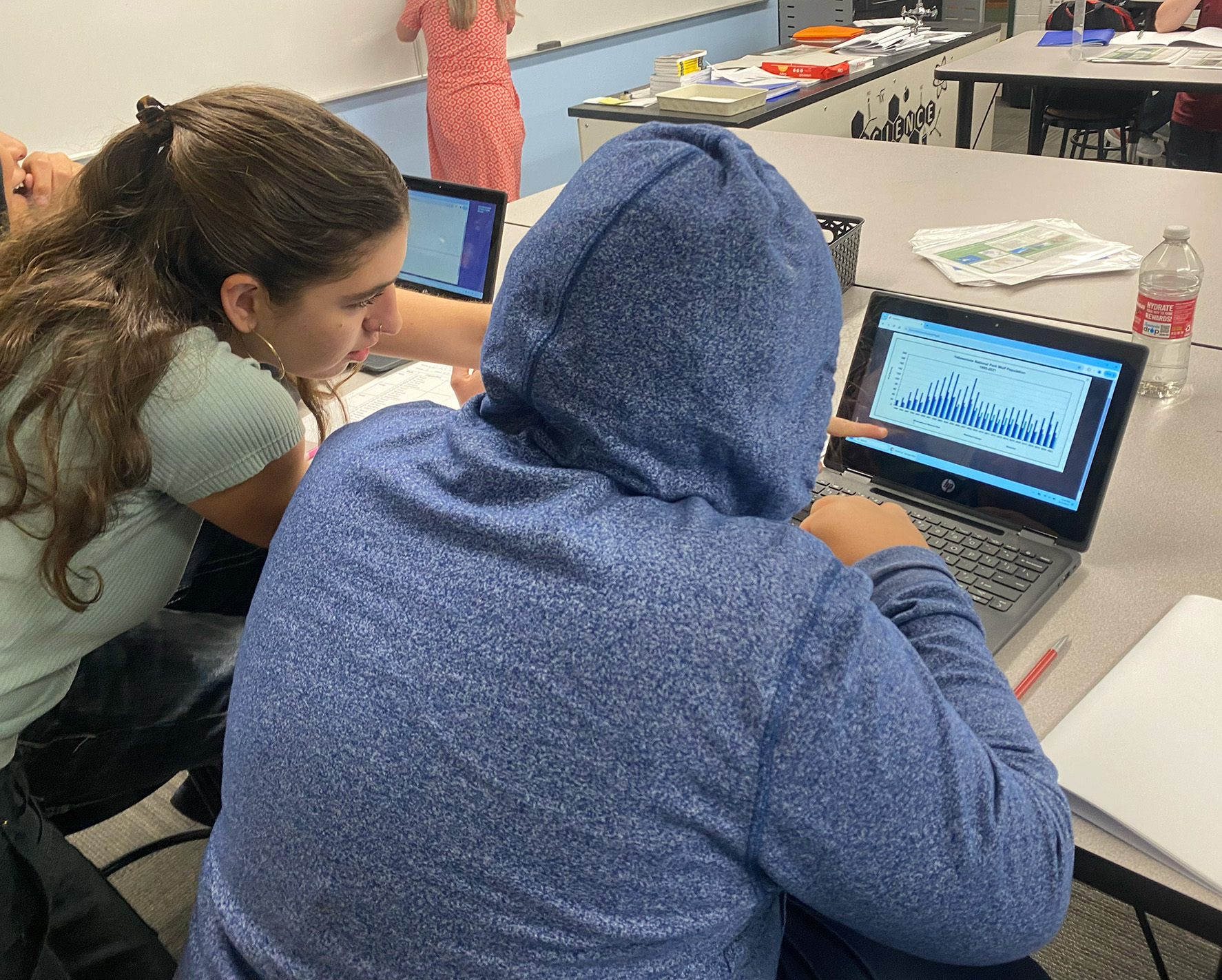
7th Grade Class at Bryant Middle
Kiri Maza teaches 7th graders how mountains move and grow by comparing different mountain ranges around the world.

High School Students at the U and in the Dirt
Last week the SLCSE high school biology students ventured across town to explore a handful of the research taking place here at the U. I tagged along with a group who visited the Puri Lab in the Crocker Science Center. Here students observed how biochemists grow methanotrophs to learn about the role these tiny microorganisms play in Earth’s climate. Later, in the Caron lab, students saw how researchers can train fruit flies and study how their brain perceives odors. They even got to test their own skills by sorting the bitty little fruit flies under a microscope and smell the smells of the fruit flies. These opportunities to see real laboratories and meet active scientists appeared to be very inspiring to a number of students, they asked lots of particularly scientific questions.
The AP Environmental Science students at SLCSE experienced a different sort of field trip. Heading out of the class just across the street they met with some volunteers for the city doing restoration work along the Jordan River. After a successful pop quiz about the importance of using native plants to kickstart an ecological restoration project, students grabbed a pair of gloves and a shovel to compete for the most plants planted over the duration of the class period. Students contributed about 20 plants each to the Jordan River project.
Though quite different from one another, both of these field trips showed students the value of what they learn in the classroom. And, in most of their opinions, it seemed more fun and rewarding than another day in the classroom.
By Ashley Morris
November 11th, 2024
Student Voices: The Impact of a Scientist in the Classroom
Williamson Fellowship Student Reflections 2025 - 7th Grade
Previous Activities and Lesson Plans

